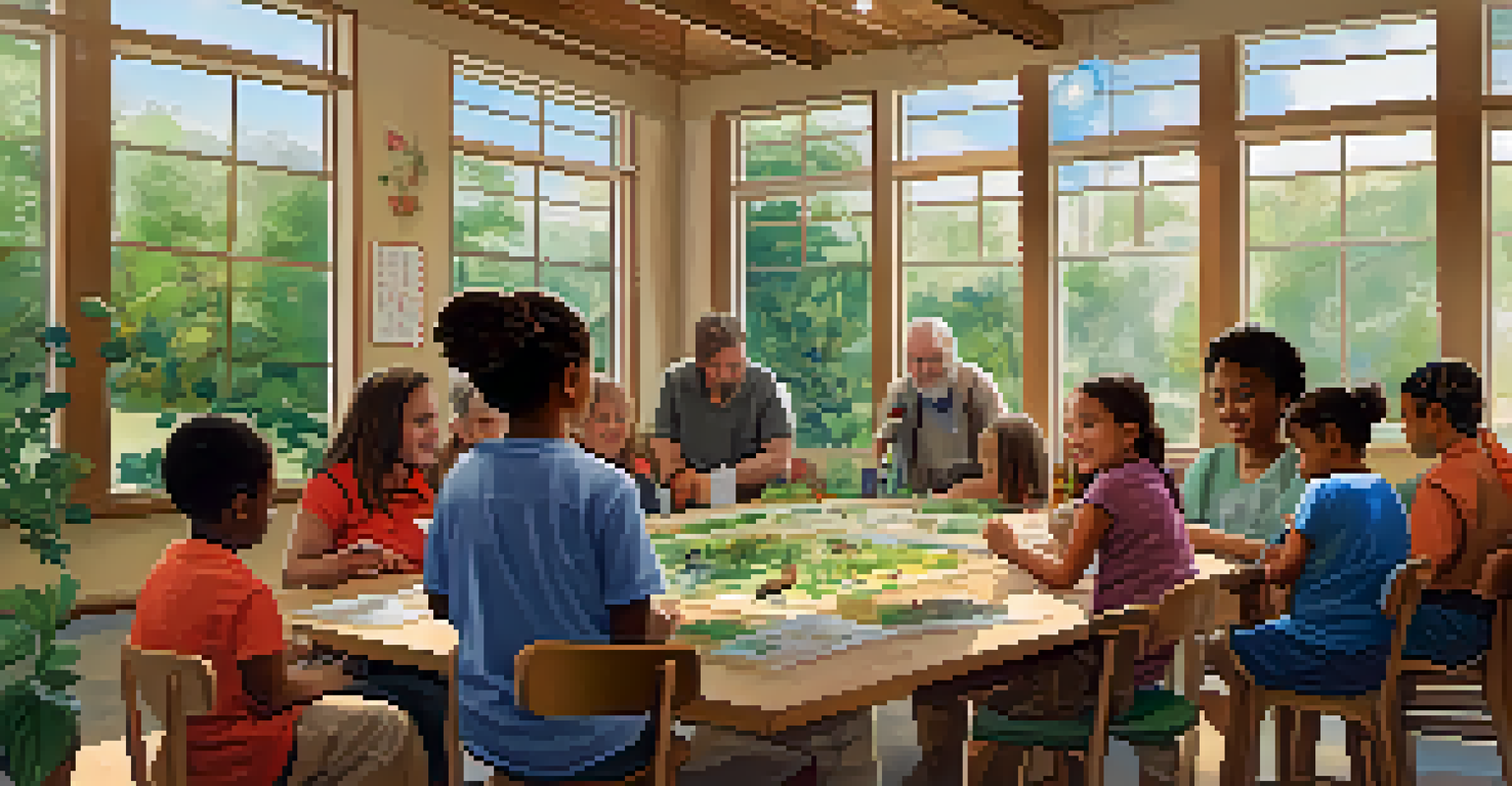Community Engagement in Georgia's Environmental Conservation

Understanding the Importance of Community Engagement
Community engagement is the cornerstone of effective environmental conservation. It involves bringing together local residents, organizations, and stakeholders to actively participate in protecting their natural surroundings. By fostering a sense of ownership, communities are more likely to invest time and resources into conservation efforts.
A community is like a ship; everyone ought to be prepared to take the helm.
In Georgia, with its diverse ecosystems ranging from coastal marshes to mountainous terrains, community involvement is crucial. Residents often have unique insights and knowledge about their local environments, which can lead to more effective conservation strategies. When people feel connected to their land, they are motivated to preserve it.
Furthermore, community engagement helps to build a network of support that can amplify conservation initiatives. When locals come together, they can share resources, ideas, and best practices, leading to innovative solutions that benefit both the environment and the community.
Successful Community-Led Conservation Projects
Georgia is home to several successful community-led conservation projects that showcase the power of local involvement. One notable example is the Georgia Adopt-A-Stream program, which encourages citizens to monitor and protect their local waterways. Volunteers learn about water quality testing and engage in clean-up efforts, fostering a sense of responsibility for their local environment.

Another inspiring project is the Atlanta BeltLine, a massive urban redevelopment initiative that transforms abandoned railway corridors into vibrant public spaces. This project not only enhances urban green spaces but also incorporates community feedback at every stage, ensuring that the needs and desires of local residents are met.
Community Engagement Boosts Conservation
Active participation of local residents in environmental initiatives leads to more effective conservation efforts.
These projects exemplify how community engagement can lead to tangible environmental benefits. By actively participating in conservation efforts, residents contribute to healthier ecosystems while also enjoying the social and recreational benefits that come from revitalized natural spaces.
Challenges in Community Engagement for Conservation
Despite its importance, community engagement in environmental conservation is not without challenges. One significant hurdle is the lack of awareness or understanding about local environmental issues among residents. Many may not realize the impact of pollution or habitat loss on their community, making it difficult to rally support for conservation efforts.
We do not inherit the earth from our ancestors; we borrow it from our children.
Additionally, there can be barriers to participation, such as time constraints or a lack of resources. Busy schedules and competing responsibilities can prevent community members from getting involved, leading to a gap in engagement. Overcoming these barriers requires innovative strategies to make participation more accessible and appealing.
Lastly, there may be conflicts of interest among stakeholders, which can complicate collaborative efforts. Balancing the needs of various groups, such as business owners and environmental advocates, is essential for fostering a cohesive approach to conservation.
The Role of Education in Fostering Engagement
Education plays a pivotal role in promoting community engagement in environmental conservation. By equipping residents with the knowledge and skills necessary to understand their local ecosystems, they become more invested in their preservation. Workshops, seminars, and school programs can all serve as platforms for fostering environmental literacy.
In Georgia, many organizations, including the Georgia Department of Natural Resources, provide educational resources to the public. These initiatives help residents learn about the importance of biodiversity, conservation techniques, and sustainable practices, empowering them to take action.
Education Empowers Local Involvement
Providing educational resources cultivates environmental literacy, inspiring community members to actively engage in conservation.
Moreover, educational programs can inspire the next generation of environmental stewards. When young people are engaged in hands-on learning about conservation, they are more likely to carry those values into adulthood, creating a culture of environmental responsibility within the community.
Leveraging Technology for Community Engagement
In today’s digital age, technology can be a powerful tool for enhancing community engagement in environmental conservation. Social media platforms, for example, allow organizations to reach a wider audience and share information quickly. This can help raise awareness about local issues and mobilize community members for conservation efforts.
Apps and online platforms also facilitate citizen science initiatives, enabling residents to contribute to data collection and monitoring efforts. For instance, platforms like iNaturalist allow users to document local biodiversity, fostering a sense of connection to nature while providing valuable data for conservationists.
By leveraging technology, communities can create dynamic and interactive experiences that engage residents in meaningful ways. This modern approach to conservation not only attracts a younger audience but also encourages collaboration among diverse groups.
Building Partnerships for Greater Impact
Building partnerships between community members, government agencies, and non-profit organizations is essential for successful environmental conservation. These collaborations can pool resources, expertise, and funding to tackle larger environmental challenges. By working together, stakeholders can create comprehensive strategies that address both ecological and community needs.
In Georgia, partnerships have led to significant conservation successes, such as the preservation of critical habitats and restoration of degraded ecosystems. Collaborative efforts often yield innovative solutions that single entities may not have been able to achieve alone.
Technology Enhances Engagement Efforts
Leveraging digital tools and platforms fosters greater community involvement in environmental conservation initiatives.
Moreover, these partnerships foster a sense of community and shared purpose. When individuals and organizations come together to tackle environmental issues, it strengthens relationships and builds trust, which is vital for long-term conservation success.
Future Directions for Community Engagement in Georgia
Looking ahead, the future of community engagement in Georgia's environmental conservation appears promising. As awareness of environmental issues continues to grow, more residents are likely to become involved in conservation efforts. This creates an opportunity for communities to take proactive steps towards protecting their natural resources.
Moreover, as technology advances, new tools and platforms will emerge to facilitate engagement. These innovations can help bridge gaps in participation, making it easier for residents to get involved and stay informed about local conservation initiatives.

Ultimately, fostering a culture of environmental stewardship within communities will be key to ensuring the sustainability of Georgia's diverse ecosystems. By continuing to emphasize the importance of community engagement, we can inspire future generations to protect the environment they cherish.